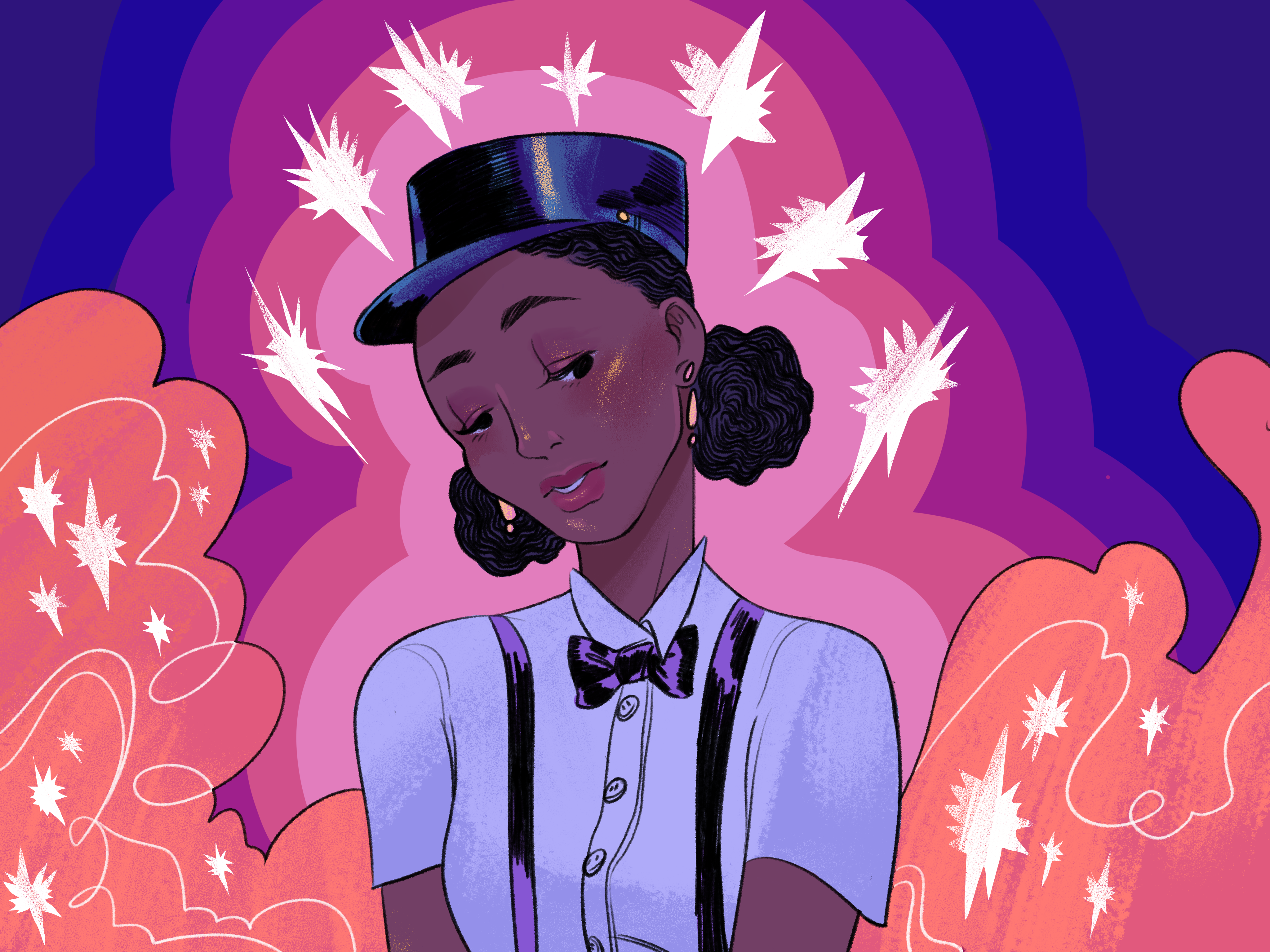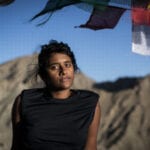“Some people talk about ya like they know all about ya . . .”
I remember watching the video for Janelle Monáe’s “Tightrope” for the very first time. I had just moved to Washington DC after college for my first job as a nurse. Socially isolated in a new city, I found Monáe’s music by clicking through listicles. When I came across the video for “Tightrope,” the esthetics took my breath away.
In what we’re told is an asylum, Monáe danced with other Black folks who were depicted as patients. They wore suits, contorted their bodies, controlled each other like puppeteers, and climbed the walls. The video felt like an acknowledgement of those of us who feel deviant: that even if I’m different, even if I’m made to feel crazy, there are others like me out there. I was instantly drawn to the feeling that there were other people whose internal world looked like mine — and with that, I started to consider my own queerness.
I felt uncomfortable calling myself queer for most of my nine-year relationship with a straight man. Even though I’d never considered myself straight, I was scared to seek out the queer community. I feared rejection. I worried that I wasn’t queer enough, or that if people asked, I would have to say I didn’t have a queer sex life, but I’d been in love with women before.
I wouldn’t pass some litmus test for queer desire, but I knew that queer was the only word that felt good.
“I was instantly drawn to the feeling that there were other people whose internal world looked like mine — and with that, I started to consider my own queerness.”
At that first job in DC, I worked with mostly white, straight women. I hid my queer identity from my peers and myself, but spent night shifts gushing about Janelle Monáe. I showed them videos for “Tightrope” and “Q.U.E.E.N.” Monáe’s danceable beats, singable refrains and bold aesthetic were something we could bond over without talking about gender-defiance, lyrics, or what the song title “Q.U.E.E.N.” stood for: Queer, Untouchables, Emigrants, Excommunicated, Negroid. We danced during our lunch breaks and sang the song to each other: “am I a freak because I like watching Mary?”
I loved the way I could show these coworkers a glimmer of who I was, even if I was afraid to say the word queer out loud. We could connect over Monáe and that helped me recognize, even subconsciously, that some of my fears were rooted inside myself alone.
As a brown queer daughter of Indian immigrants, I saw Monáe reflect aspects of my own desire, uncertainty and fear. I dodged a real-life queer community that I felt too ashamed to be a part of and avoided any conversation about my desires, relying on pop culture to validate my experiences.
“I dodged a real-life queer community that I felt too ashamed to be a part of and avoided any conversation about my desires, relying on pop culture to validate my experiences.”
After working in DC for a few years, I started working as a travelling nurse. My contracts brought me to places as LGBT-friendly as San Francisco and as conservative as Alaska, but moving every few months created a disconnect between myself and the places I lived. Despite living in a few rainbow-filled cities, I didn’t think finding a community was worth the uncomfortable conversations I would inevitably have, and I didn’t want to explain myself or my relationship with a man. I sought people who looked like me through the internet, where I had lower personal stakes.
Soon after hearing Monáe for the first time, I sat on the floor of my apartment, poring over her interviews. When I didn’t find any concrete evidence that marked her definitively as a queer woman, I questioned why I was looking.
Monáe’s lyrics were questions that resonated with my own thoughts and desires. I felt like the acknowledgement of desire alone was a path through which I could start to accept myself. I needed these words. I needed to know that others were grappling with their queerness in complicated, uncomfortable ways.
In different moments within my own queer journey, I’ve wondered whether I’m “queer enough.” Would I be queer enough if I shaved my head? Would I be queer enough if I advertised my identity on my Instagram profile? Would I be queer enough if I declared it in every piece of writing I created?
“In different moments within my own queer journey, I’ve wondered whether I’m ‘queer enough.’”
I considered that my fears — that I’d be questioned about my sex life by other queers, that people wouldn’t believe me, that talking about my identity as a woman dating a man would be uncomfortable — might be unfounded. Janelle Monáe was creating art, celebrating women and creating song titles that referred to queer identity, and she hadn’t told anyone who she slept with. She didn’t have to pass a public litmus test for queerness. I realized that there are no queer police and no one who can tell me whether I’m queer enough. Maybe I could believe myself and that internal understanding alone would be enough.
Through questions about identity in the song “Q.U.E.E.N.” Monáe comes to a decision: “even if it makes others uncomfortable, I wanna love who I am.” At the time, I didn’t realize that my white, straight coworkers recognized me as queer, even if I never said it out loud. When I finally came out to them, almost a year after leaving that job, they said, “oh, I thought you always identified as queer.”
“Being queer doesn’t mean any one specific thing.”
Avoiding the term didn’t keep me from living life in a way that was inherently bold, subversive and queer. Likewise, even though, for years, there was no public information stating Monáe was queer, so many of us knew that she didn’t need to come out in order to make queer art.
I know now that every stage of my coming out process is valid. I was in love with a girl as a teenager; we talked about our romantic love for each other but never fully acted on it. That was valid. I struggled to see myself in lesbian narratives and feared taking up too much space in queer communities while dating a straight man. That was valid, too. I officially came out three years before breaking up with my boyfriend. Becoming public with my queerness did not invalidate our love and dating a man did not invalidate my queerness. Being queer doesn’t mean any one specific thing.
Years after The ArchAndroid album, after starring in feature films and releasing Dirty Computer, Monáe declared herself to be a “free-ass motherfucker.” While she acknowledges she has identified as bisexual and pansexual, she also makes room for fluidity within those labels and is “open to learning more about who I am.” This year, Monáe has started talking about how her family — a big, religious, Southern family — has been a source of fear when creating music and art. This fear, the one rooted in religion, and in what a big, extended family will think, is one that parallels my own. Similarly, to acknowledge desire was subversive for a daughter of Indian immigrants like me.
“Similarly, to acknowledge desire was subversive for a daughter of Indian immigrants like me.”
By navigating the complicated process of being queer publicly, Monáe gave me an example of someone who doesn’t know where these doors lead, but who makes, creates and builds worlds as she figures it out. When I date now, I forgive myself for the ways in which I hid my queerness for so long. I have compassion towards every iteration of my former selves because I know I’m not alone in having a messy coming out process that lacks a clean narrative arc. I’m honest about what I don’t know within culture, sex, relationships and my own feelings.
And those are maybe the biggest gifts representation offers, the gifts Janelle Monáe has given me: the knowledge I’m not alone and the language to be honest about this complicated path.



 Why you can trust Xtra
Why you can trust Xtra


